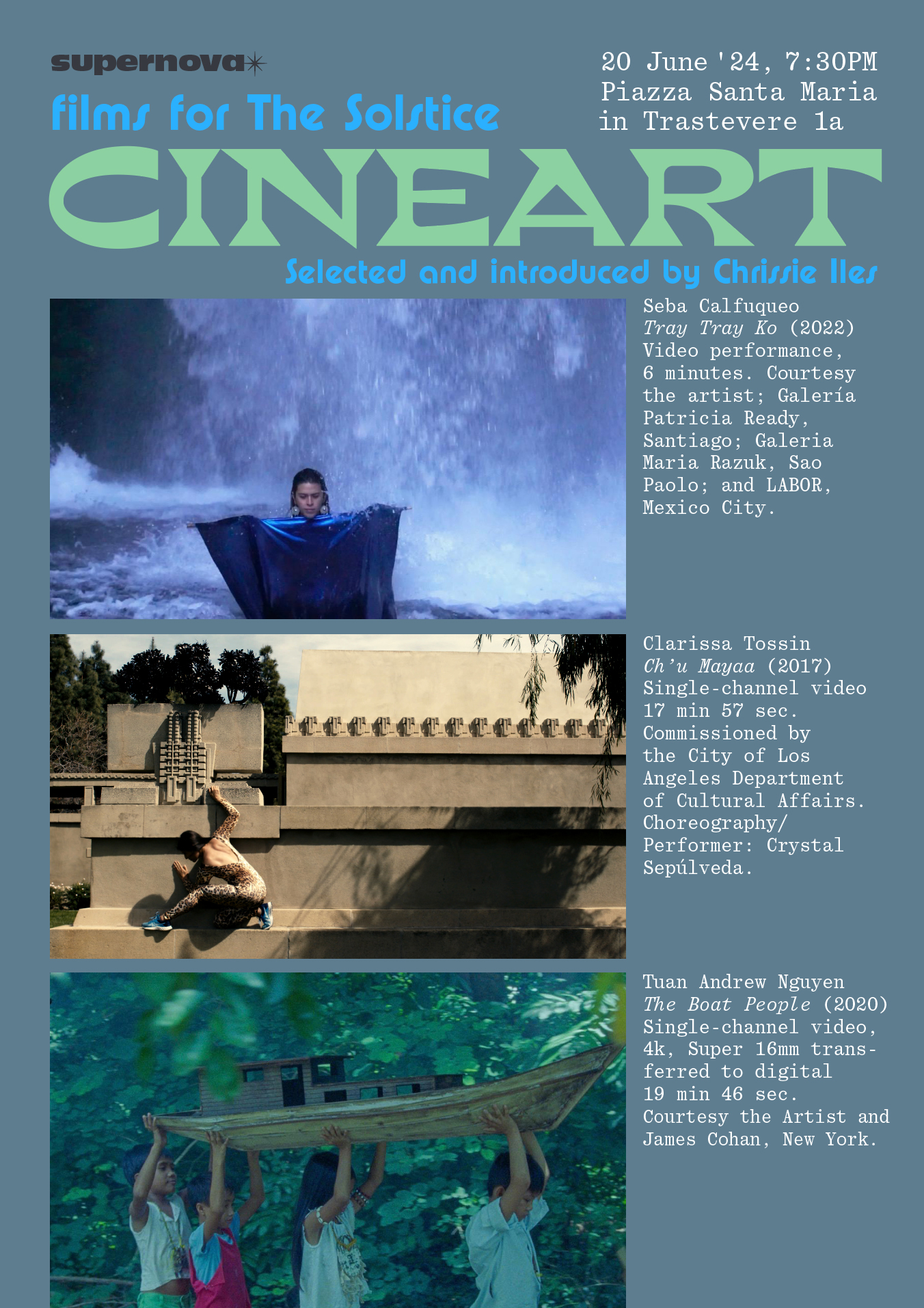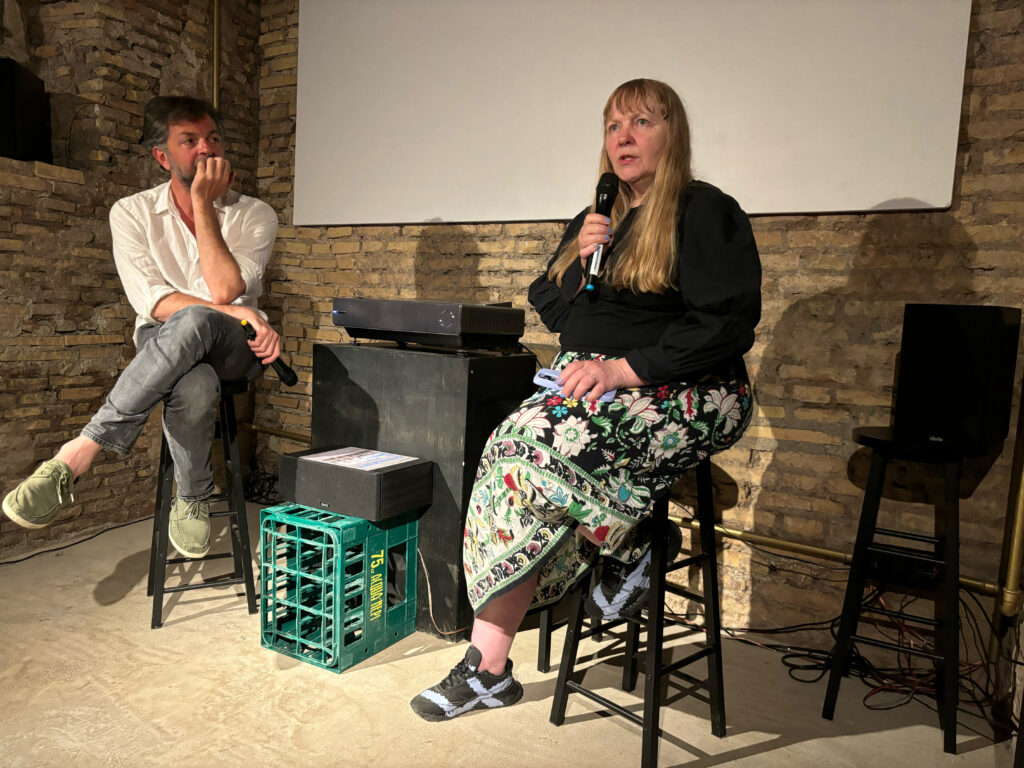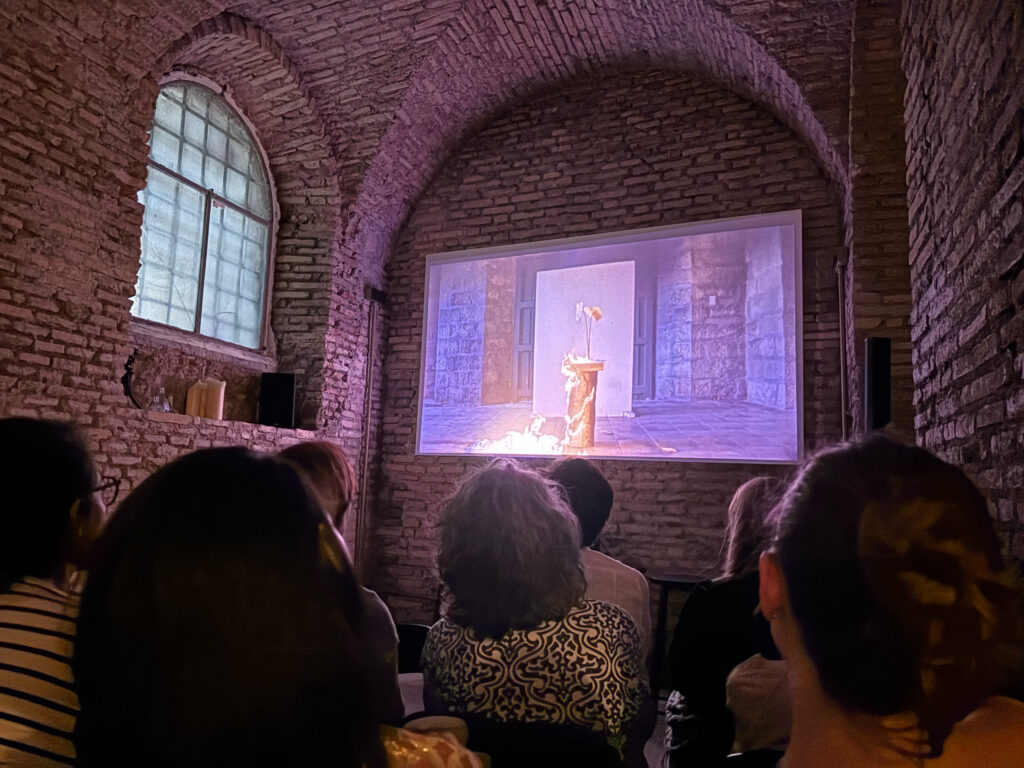20th of June at 7:30 pm

Supernova invites you to Films for The Solstice a night of films selected and introduced by Chrissie Iles, Anne and Joel Ehrenkranz Curator, Whitney Museum of American Art.
Three recent films by artists Seba Calfuqueo, Clarissa Tossin and Tuan Andrew Nguyen explore Mapuche and Maya cosmologies, the supernatural, and storytelling.
Seba Calfuqueo’s ‘Tray Tray Ko’ (2022) invites us to embark on a journey into the heart of the Mapuche cosmovision. In a video performance, the artist interweaves her own body into a sacred landscape. The Mapuche people have lived in the south and central regions of Chile and Argentina for thousands of years, and believe that the flow of water – especially waterfalls -has medicinal and healing properties. Draped in a long electric blue fabric, the artist pulls it through the forest, acting as a conduit between the tangible and the spiritual. By highlighting the inter-connectedness between her own personhood and the landscape, Seba Calfuqueo resists the dominant forces that threaten the area, including the Chilean government’s efforts to destroy Indigenous homelands for commercial use, and situates her own identity as a trans person within the natural world.
In Clarissa Tossin’s ‘Ch’u Mayaa’ (2017), Frank Lloyd Wright’s Hollyhock House, built in 1921 at the height of the Maya Revival style in Los Angeles, is re-mapped as Maya space through a sonic and haptic transformation of the building by a series of dance movements performed by Crystal Sepúlveda across the surface of its exterior. The film features a soundtrack of birds, cicadas, wind, drums, a heartbeat, thunder, and music played on a clay jaguar flute by Maya elder Xavier Quijas Yxayoti. The healing ritual inscribed in these evocative sounds and movements, based on gestures found on ancient Maya pottery and murals, transforms the building into an uncanny echo of the site of its quotation – the ancient ruins of Uxmal in Mexico. This symbolic reclaiming of the borrowed indigenous cultural motifs of Wright’s building re-signifies it as belonging to a pre-Columbian heritage beyond Modernism, and to the present cultural life of Los Angeles and its Maya community.
Tuan Andrew Nguyen’s film ‘The Boat People’ (2020) is set in an unspecified time in the future, at a moment on the edge of potential extinction. The film follows a group of children, calling themselves the ‘Boat People’, as they travel across seas and land, gathering objects, artifacts and stories from a fragmented past world of human civilization that they never knew. They encounter a place formerly known as Bataan, and discover on its coast traces of war, a refugee crisis, and evidence of some of the earliest migrations in human history. Ideas of precarity, history and cultural memory are woven together in this existential, post-apocalyptic poetic film that invites us to re-imagine both the past and the future.

